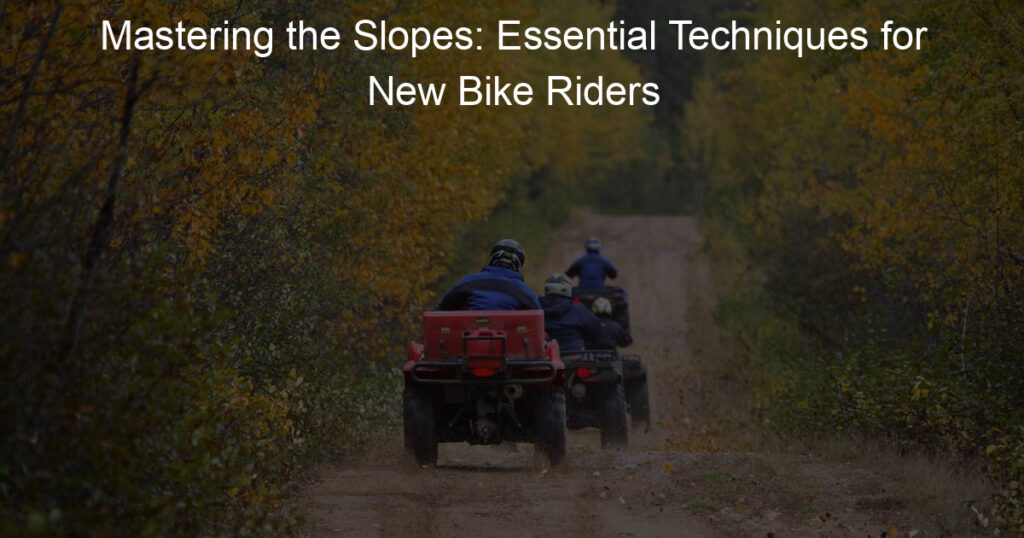
Introduction to Mountain Biking Techniques for Beginners
Mountain biking is an exciting and adventurous outdoor activity that offers numerous benefits. However, to fully enjoy this sport, it’s crucial to learn and master the right techniques. This guide will provide a comprehensive overview of mountain biking and emphasize the importance of learning proper techniques for beginners.
- Overview of Mountain Biking
- Importance of Learning Proper Techniques
Mountain biking is a type of off-road cycling that involves riding bicycles over rough terrains. It requires balance, endurance, strength, and core stability. This sport is not only a great way to stay fit but also a fantastic method to enjoy the beauty of nature. There are different types of mountain biking, including cross-country, trail riding, all mountain, downhill, freeride, slopestyle, and dirt jumping. Each type requires different skills and techniques.
Learning the correct mountain biking techniques is essential for several reasons. Firstly, it enhances your safety. Mountain biking can be risky, especially when riding on rough terrains. Proper techniques can help you navigate these terrains safely. Secondly, it improves your performance. The right techniques allow you to ride faster, climb higher, and descend more smoothly. Lastly, it increases your enjoyment. When you know how to handle your bike properly, you can tackle more challenging trails and have more fun.
Mountain biking is a thrilling sport that offers a unique blend of physical challenge and outdoor fun. However, it’s important to remember that safety should always be a priority. By learning and practicing the correct techniques, you can enjoy mountain biking to the fullest while minimizing the risk of injury. So, gear up, get out there, and start your mountain biking adventure!
Essential New Rider Cycling Techniques
Basic Riding Position
- Importance of a Proper Riding Position: A correct riding position is crucial for comfort and efficiency. It reduces the risk of injury and allows for better control of the bike.
- How to Achieve the Correct Riding Position: Keep your back straight, bend your elbows slightly, and position your hands on the handlebars. Your knees should be directly over your feet when the pedals are at the lowest point.
- Understanding Your Bike’s Braking System: Familiarize yourself with your bike’s braking system. The right hand usually controls the rear brake, and the left hand controls the front brake.
- How to Brake Efficiently and Safely: Always use both brakes simultaneously. Apply the rear brake slightly before the front brake to prevent flipping over.
- Choosing the Right Gear: Use lower gears for uphill climbs and higher gears for flat surfaces and downhill. Changing gears before you need them can help maintain a steady pace.
- Maintaining a Steady Pace: Keep a consistent speed that allows you to pedal smoothly and breathe comfortably. This will help conserve energy and build endurance.
- Conserving Energy: Avoid unnecessary movements and maintain a steady rhythm. This will help you save energy for longer rides.
- Overview of the Case Study: A study of 100 new cyclists showed that those who followed these techniques improved their riding skills significantly within a month.
- Key Takeaways for Uphill Cycling: Uphill cycling requires lower gears, a steady pace, and efficient energy use. Practice makes perfect!
- Controlling Speed: Use your brakes to control your speed, especially when going downhill or around corners.
- Choosing the Right Path: Always choose a path that is within your skill level. As you gain confidence and improve your skills, you can tackle more challenging paths.
- Handling Corners and Obstacles: Slow down before you reach a corner or obstacle, and then accelerate as you pass it. Always keep your eyes on the road ahead.
- Overview of the Case Study: In another study, cyclists who practiced these techniques were able to navigate corners and obstacles more efficiently.
- Key Takeaways for Downhill Biking: Downhill biking requires good balance, control, and the ability to choose the right path. Remember to control your speed and use your brakes effectively.
- Transitioning Between Uphill and Downhill: Transitioning between uphill and downhill can be challenging. Practice shifting your weight and changing gears smoothly.
- Common Mistakes to Avoid: Avoid locking your elbows, riding in the wrong gear, and neglecting to use both brakes. These mistakes can lead to discomfort and accidents.
- Building Endurance: Gradually increase the length and intensity of your rides. This will help build your endurance and improve your overall cycling performance.
- Improving Balance and Control: Practice riding with one hand, standing on the pedals, and looking over your shoulder without swerving. These exercises can improve your balance and control.
- Recap of Essential Techniques: Proper riding position, understanding your bike’s braking system, choosing the right gear, and maintaining a steady pace are all essential techniques for new riders.
- Encouragement for Continued Practice: Remember, practice makes perfect! Keep practicing these techniques, and you’ll become a more confident and skilled cyclist in no time.














